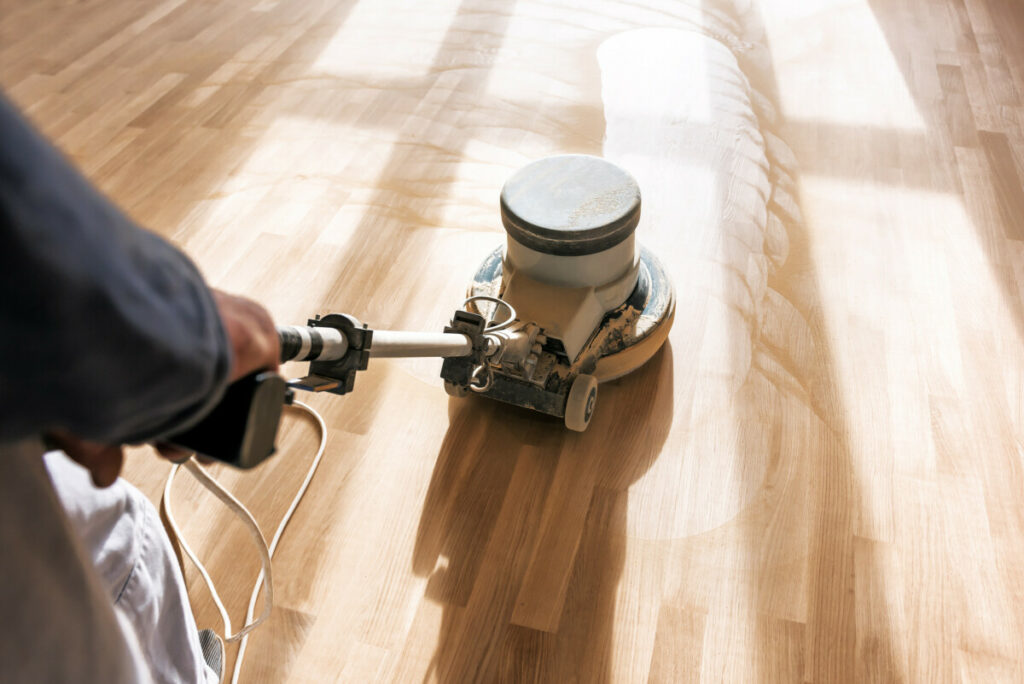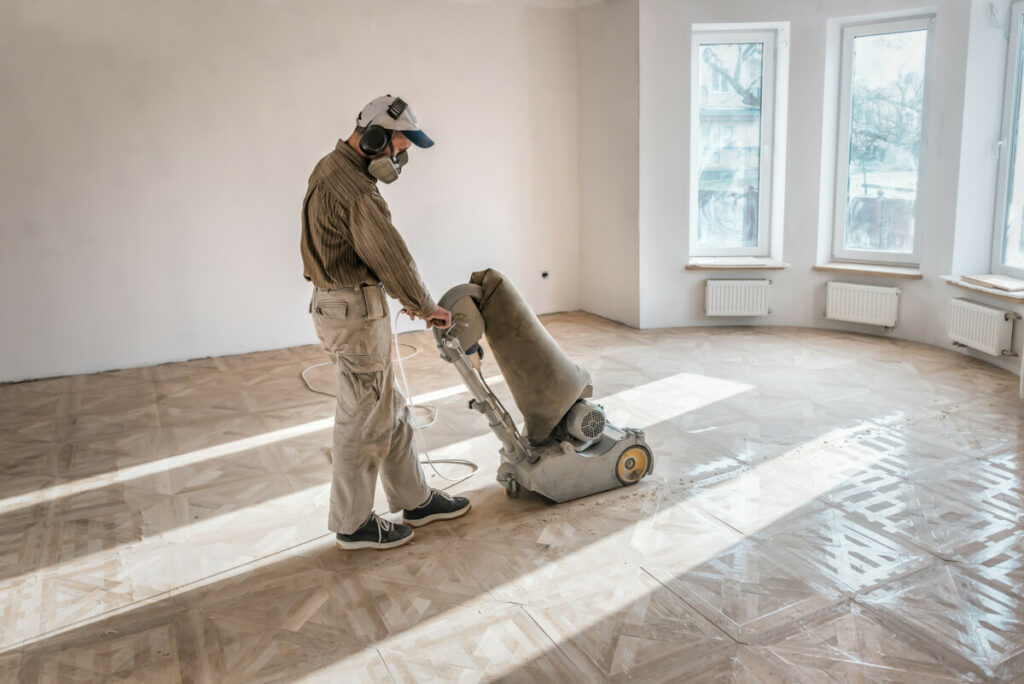
As wood floors start to get old, they can become miscolored, dented, or even have their finish completely worn off. These are all signs that your floor needs to be replaced, but can you save some money by sanding your floor instead of replacing it?
Refinishing hardwood floors is totally worth it. Sanding and refinishing hardwood floors extends the lifespan of the floor and is much cheaper than replacing it. It is much quicker to sand and refinish a floor than to replace it. It’s also better for the environment.
You probably have several more questions about floor sanding. Throughout the rest of the article, I will go over the price, how often floors should be sanded, some signs that you might want to consider sanding your floors, and basic instructions on doing the sanding yourself.
Cost of Sanding Your Own Floors
When it comes to the cost of refinishing hardwood floors, the main determining factor is going to be whether it’s done by a company or if you do it yourself.
Company
| Area | Square Footage | Approximate Price (Company) |
|---|---|---|
| 4′ x 10′ | 40 | $300- $600 |
| 10′ x 10′ | 100 | $300- $800 |
| 12′ x 12′ | 144 | $500- $1,100 |
| 20′ x 20′ | 400 | $1,200- $2,000 |
| 24′ x 24′ | 576 | $1,500- $2,800 |
| Small House | 1,000 | $2,000- $4,000 |
| Average House | 2,000 | $4,000- $6,000 |
| Large House | 3,000 | $6,000- $8,000 |
DIY
If you decide to refinish your own floors, expect to pay about $300-$500 per room. Most of the cost is for equipment like the sander and the sealer you will use. Rental costs for a sander and sandpaper, the type of finish you want, and the size of the room will all affect the total cost of your refinishing project.
Cost of Equipment
If you decide that you want to sand your own floor, there are a few things that you are going to need. The most important things to have are going to be a drum sander and an edging sander to get the corners. The drum sander will cost you about $70 to rent for a day and the edging sander will cost $40.
Some of the other equipment you are going to need will be a vacuum cleaner, to get all of the sawdust, a hammer, a nail punch ($8), and a variety of different grit sandpaper. I recommend at least using 3 different sandpaper grits, but to have the best results I recommend 16 grit, 24 grit, 40 grit, 60 grit, 80 grit, and 120 grit.
You will also want some safety equipment, including a mask to filter out the dust and some ear protection. Earplugs will be the cheaper option, but earmuffs will be much more effective while costing about $10 more.
Click here to check out my full resource on hardwood floor refinishing costs. It includes a video and a hardwood floor refinishing costs calculator.
How Often Do You Need to Sand Your Floors?
Hardwood
Depending on the thickness of the floor, a hardwood floor can typically be sanded 4-7 times throughout its lifetime. Typically a hardwood floor should be sanded and refinished every 7-10 years, meaning that your hardwood floor can last for up to 700 years.
The frequency that you are going to have to sand your hardwood floors is going to be determined by the quality of the wood, the humidity, and the care of the floors.
Engineered Wood
Engineered wood is a thin layer of wood fixed to a ply base. The solid wood surface is known as the ‘wear layer’. Cheaper engineered wood flooring has a very thin layer which would be almost impossible to sand without going through the wear layer and revealing the ply.
That is not pretty!
However, the vast majority of engineered wood floors are ok to sand. Just check the thickness at the edge of the floor, either in a cupboard or radiator pipe hole. If there is no where to see, you may need to drill a hole in an inconspicious corner.

Signs You Need to Sand Your Floors
There are a variety of different reasons that you will want to sand and refinish your hardwood floors. Here are some signs to look for!
Water Test
Put some water on your floor. The water should stay as a droplet on the floor if your finish is still good. If the floor absorbs the droplet, even over time, then your finish has worn off in areas. This is a big sign that the floor should be sanded and refinished.
Scratches or Dents
Another primary reason that you may want to sand your floors is because of scratches and dents. By sanding the floor, you can get rid of these and then put a nice finish on top of it in order for your floors to be smooth and sealed again. A good finish should protect the wood, but dents or scratches in the floor expose the wood under the finish to further damage.
Warping/Cupping
If you notice that some of your floorboards are starting to bend or warp, then it might be time to sand them down level again. This also is a sign that there may be water damage, which will need to be addressed before sanding.
Cost To Replace The Floor
Hardwood
If you decide to replace your hardwood floor, it will cost you a lot. Hardwood flooring, on average, costs $8 per square foot. You can find options ranging from $4 to $12 per square foot. The type of wood will determine how much you end up paying, as woods like oak and maple are much cheaper than woods like Brazillian cherry or walnut.
Engineered Wood
The average price for engineered wood is $8 per square foot, but you can find it as low as $5 per square foot at some locations.



Comments